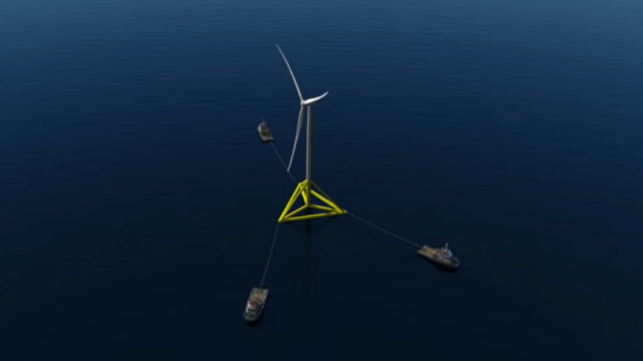Japanese Utility Invests in "Assembly-Line" Floating Wind Project

Japanese electric utility Tepco has taken a 30 percent stake in the TetraSpar floating wind turbine project joining oil major Shell and German utility RWE. It is the latest sign of interest in floating offshore wind amongst top utilities and energy companies looking to expand the sector's potential beyond near-shore environments.
TetraSpar differs from the other floating offshore wind prototypes on the market by virtue of its modularity and factory-oriented design. Its sponsor, Stiesdal Offshore, had the Model T Ford in mind: Henry Ford attempted to make a car that could be mass-produced in a factory setting, and as sales volumes rose, he drove down the unit price by a factor of four within a decade. That production-line ethos can also be found in the construction of wind turbine towers, which are rolled out and welded up by the thousands at very low cost.
Veteran wind power engineer and executive Henrik Stiesdal wants to do the same thing with floating wind platforms - make tubular parts on the same factory production lines used to make turbine towers, then ship the parts to a port near the installation site for assembly. When constructed and installed, the tetrahedral foundation is anchored by three mooring lines and connected to a triangular steel "keel," which hangs below and provides ballast.
The components for the first prototype foundation were built by offshore wind tower fabricator Welcon last year. They were trucked to the port of Grenaa, Denmark and assembled in a process that took less than two months. The prototype is scheduled for launch this year, and it will carry a small 3.6 MW Siemens turbine for initial trials at the Marine Energy Test Centre off Stavanger, Norway.
The design's modularity and scalability have attracted outside investors, including Shell, which owns nearly half of the venture.
"The TetraSpar technology can also be utilized in Japan’s natural conditions and a more efficient supply chain can be established closer to the project sites," said Seiichi Fubasami, the president of Tepco RP. "We believe that it is a promising technology that can play an important part in efforts to promote the transition to renewable energies as primary energy sources."
